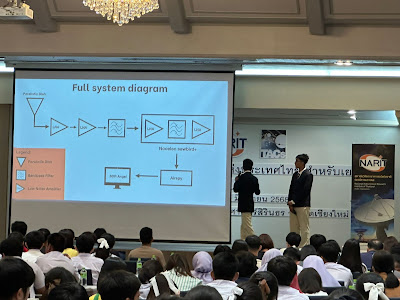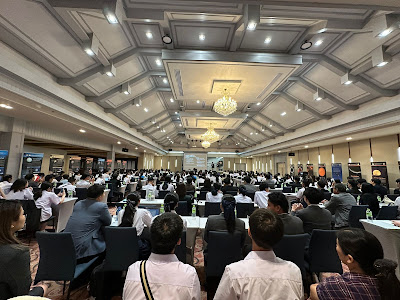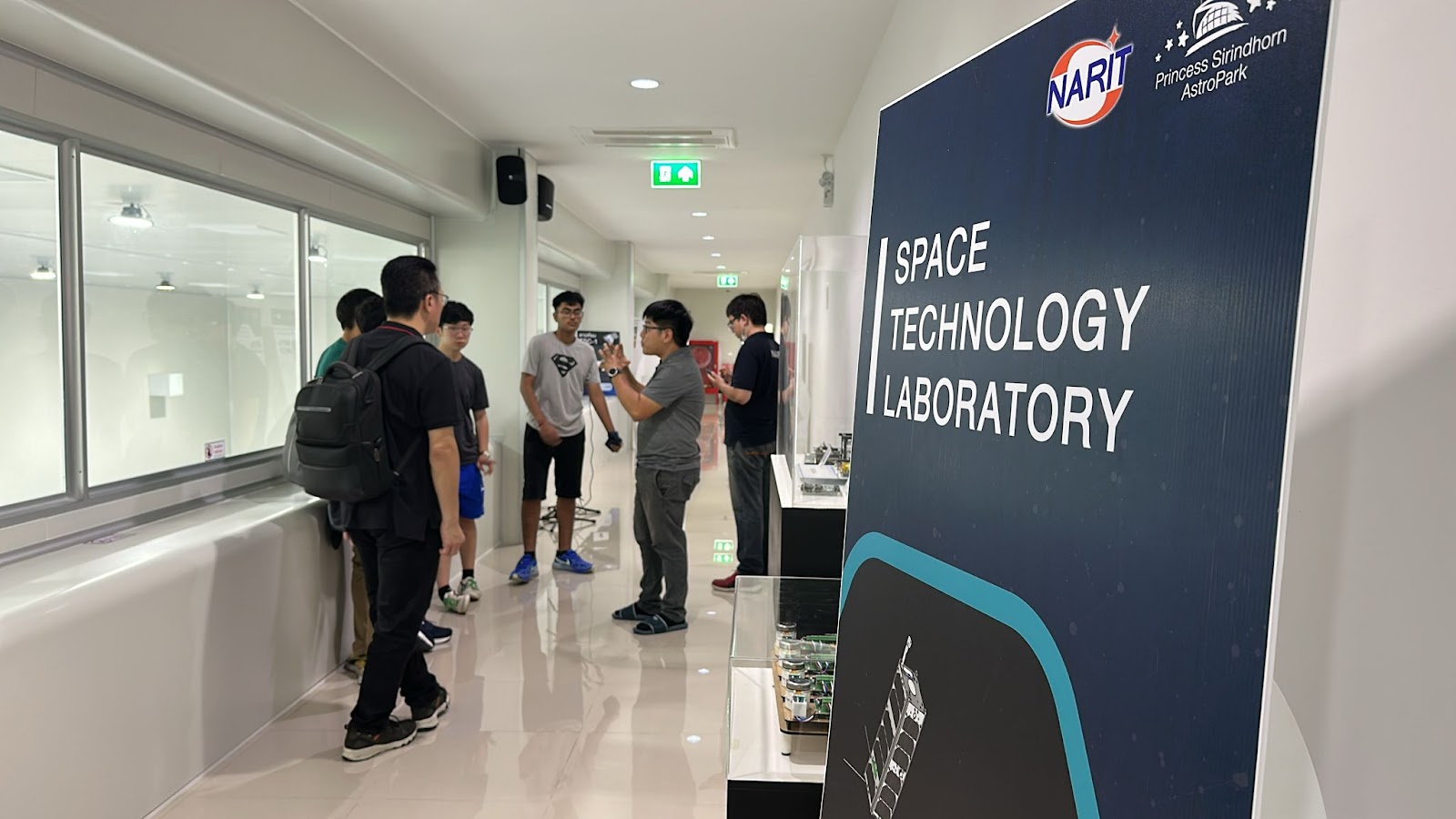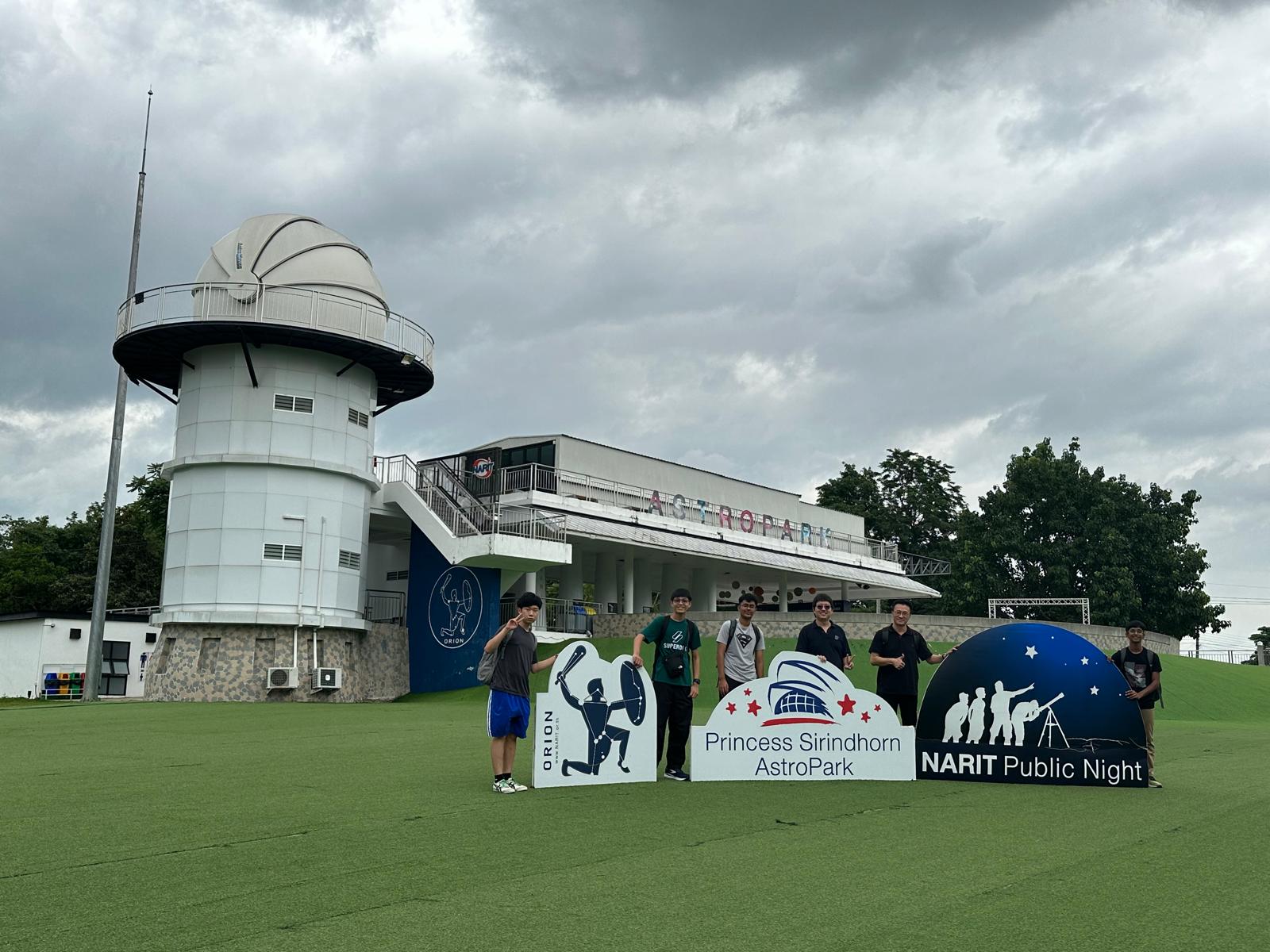For the third year, SST Astronomy Club joined the 11th Thailand Astronomy Conference from 27-30 June 2025. This time around, we made the trip all the way to Chiangmai for the competition.
During the competition, we had the chance to interact with the students from Thailand schools. By pitting our skills against the best in Thailand schools, we are able to match up to the high research standards.
SST is represented by
Measurements of the speeds of the various regions in the Milky Way Galaxy using a parabolic grid dish antenna
by Ishaan Rai, Akshay Muraleedharan
Abstract The Milky Way is a barred spiral galaxy with several spiral arms. Observations of the hydrogen spectral line allow astronomers to map gas clouds in the Galaxy and infer their motion by the Doppler effect. In this project, we used a parabolic grid dish antenna on SST rooftop to observe the hydrogen line in the direction of the Crux constellation (chosen via the Stellarium sky app). The radio spectrum around (the hydrogen line rest frequency) was recorded with an SDR (Software Defined Radio). A small Doppler shift in the line frequency would indicate motion of the gas. Our data show a clear hydrogen signal near the rest frequency, with only a slight shift (on the order of a few tens of km/s). This result is consistent with the gas having little relative motion (or moving at modest speeds) along our line of sight. Such measurements can help map the Milky Way’s rotation and structure by comparing Doppler shifts in different sky regions (rtl-sdr.com, en.wikipedia.org). Keywords: Milky Way, Hydrogen Line, Parabolic Antenna
Abstract: With the possibility of solar activity disrupting terrestrial communication systems, indicators of solar activity are of significant scientific and public interest. Solar proxies are required to measure the level of solar activity. The 10.7cm (2800MHz) radio band is commonly used as a solar proxy, due to the ease of recording and long history of use. However, the difference in emitted frequencies between types of solar weather requires evaluating different frequencies in predicting and mitigating the impact of solar events. In this paper, we compare the 10.7cm radio flux with the 30 cm radio flux (1000 MHz), finding that the 10.7cm radio flux has a moderately positive correlation with solar activity, while the 30 cm radio flux does not have a noticeable correlation with solar activity. We assess the limitations of the setup and the feasibility of using solar radio flux as a solar proxy.




















No comments:
Post a Comment